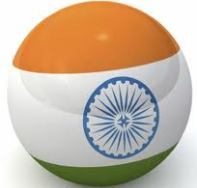 With 4.5 million signatures on a Google petition and one million messages sent to the United States Congress via the Electronic Frontier Foundation (EFF) in a single day, January 18, advocates of a free Internet have mounted a determined bid to stall new legislation that can chill free speech. The global chorus against two Bills that are winding their way through the American legal system is growing. The two draft laws in the U.S. House of Representatives and Senate, now known around the world by the acronyms SOPA and PIPA (for Stop Online Piracy Act and Protect IP Act), have raised a storm on the Internet. Read full article
With 4.5 million signatures on a Google petition and one million messages sent to the United States Congress via the Electronic Frontier Foundation (EFF) in a single day, January 18, advocates of a free Internet have mounted a determined bid to stall new legislation that can chill free speech. The global chorus against two Bills that are winding their way through the American legal system is growing. The two draft laws in the U.S. House of Representatives and Senate, now known around the world by the acronyms SOPA and PIPA (for Stop Online Piracy Act and Protect IP Act), have raised a storm on the Internet. Read full article
Know More About SOPA and PIPA
26 Jan 2012
By
Admin
 With 4.5 million signatures on a Google petition and one million messages sent to the United States Congress via the Electronic Frontier Foundation (EFF) in a single day, January 18, advocates of a free Internet have mounted a determined bid to stall new legislation that can chill free speech. The global chorus against two Bills that are winding their way through the American legal system is growing. The two draft laws in the U.S. House of Representatives and Senate, now known around the world by the acronyms SOPA and PIPA (for Stop Online Piracy Act and Protect IP Act), have raised a storm on the Internet. Read full article
With 4.5 million signatures on a Google petition and one million messages sent to the United States Congress via the Electronic Frontier Foundation (EFF) in a single day, January 18, advocates of a free Internet have mounted a determined bid to stall new legislation that can chill free speech. The global chorus against two Bills that are winding their way through the American legal system is growing. The two draft laws in the U.S. House of Representatives and Senate, now known around the world by the acronyms SOPA and PIPA (for Stop Online Piracy Act and Protect IP Act), have raised a storm on the Internet. Read full article
Related Posts with thumbnails for bloggerblogger widgets
Continue reading..
Polio Eradication in India | Polio Eradication Initiatives in India
22 Jan 2012
By
Admin
 It is sobering to look back and recall that three decades ago tens of thousands of children in this country, many of them infants, were being crippled, even killed, by polio each year. The fight to vaccinate and protect our little ones from this dreadful condition has been long and hard; mistakes have been made, and lessons learnt. No Indian child was recorded as having fallen victim to the disease in the past year. Surveillance laboratories are carefully testing stool samples from children as well as sewage, making sure that naturally occurring wild forms of the polio-causing virus are not circulating. Once that has been ascertained, India will be taken off the list of endemic countries. Currently, there are four countries in the list collectively known by the acronym PAIN (Pakistan, Afghanistan, India, and Nigeria). Read full article
It is sobering to look back and recall that three decades ago tens of thousands of children in this country, many of them infants, were being crippled, even killed, by polio each year. The fight to vaccinate and protect our little ones from this dreadful condition has been long and hard; mistakes have been made, and lessons learnt. No Indian child was recorded as having fallen victim to the disease in the past year. Surveillance laboratories are carefully testing stool samples from children as well as sewage, making sure that naturally occurring wild forms of the polio-causing virus are not circulating. Once that has been ascertained, India will be taken off the list of endemic countries. Currently, there are four countries in the list collectively known by the acronym PAIN (Pakistan, Afghanistan, India, and Nigeria). Read full article
Related Posts with thumbnails for bloggerblogger widgets
Continue reading..
Indian Current Affairs | Current Affairs India - January 2012
15 Jan 2012
By
Admin
On Jan 12th 2012, India has touched a milestone of being polio free for one whole year. The lone case of polio in 2011 was detected in a two year old girl in Panchla block of Howrah, West Bengal, with the onset of paralysis on 13th January 2011. India took a lead in introducing bivalent polio vaccine (bOPV) in January 2010. Despite global shortage of both bOPV and trivalent Polio vaccine, India tapped domestic market for timely supply of vaccine to ensure pulse polio rounds without interruptions. The prorgamme has been in the forefront of adopting technological innovations. The more efficacious monovalent oral polio vaccines were introduced in the Pulse Polio campaigns in 2005 which helped curtail the most dangerous type 1 polio strains to record low levels by 2009. In 2010 the bivalent oral polio vaccine was introduced which helped curtail both Type 1 and Type 3 polioviruses simultaneously and as efficaciously as the monovalent vaccines.
Related Posts with thumbnails for bloggerblogger widgets
Continue reading..
Mullaperiyar Dam : View of Kerala by N K Premachandran
By
Admin
 In his article headlined “Unwarranted fears on Mullaperiyar,” published in
The Hindu
on December 31, 2011, Durai Murugan, Tamil Nadu's former Minister for Water Resources and Law, and senior DMK leader, attempts to portray Tamil Nadu as a potential victim of machinations by Kerala aimed at depriving Tamil Nadu of its rightful share of water from the Mullaperiyar dam. It is necessary to lay out the facts relating to the stance taken by Kerala so as to impart greater clarity on, and understanding of, the issue.
In his article headlined “Unwarranted fears on Mullaperiyar,” published in
The Hindu
on December 31, 2011, Durai Murugan, Tamil Nadu's former Minister for Water Resources and Law, and senior DMK leader, attempts to portray Tamil Nadu as a potential victim of machinations by Kerala aimed at depriving Tamil Nadu of its rightful share of water from the Mullaperiyar dam. It is necessary to lay out the facts relating to the stance taken by Kerala so as to impart greater clarity on, and understanding of, the issue.
Related Posts with thumbnails for bloggerblogger widgets
Mullaperiyar Dam : View of Tamil Nadu by Durai Murugan
By
Admin
In the latest intensification of the Mullaiperiyar controversy, I see the media discourse not only tilted in favour of Kerala but also seeking to paint Tamil Nadu in a bad light — as an adamant State not concerned about the safety of the people in the neighbouring State. The propaganda by Kerala, which was started way back in 1979 with an article in a Malayalam newspaper, has become so institutionalised now that I see independent experts and activists voicing opinions that fail to take into account Tamil Nadu's considered standpoint.
Related Posts with thumbnails for bloggerblogger widgets
HIV/AIDS in India | AIDS in India
14 Jan 2012
By
Admin
India has an HIV/AIDS population of approximately 1.5 million people. The estimated number of human immunodeficiency virus (HIV) infections in India has declined drastically in recent years—from 5.5 million in 2005 to below 1.5 million in 2011. According to the United Nations 2011 AIDS report, there has been a 50% decline in the number of new HIV infections in the last 10 years in India. AIDS prevalence rate in India is lower than in many other countries. In 2007, India's AIDS prevalence rate stood at approximately 0.30% — the 89th highest in the world. The spread of HIV in India is primarily restricted to the southern and north-eastern regions of the country. The states with high HIV prevalence rates include Manipur (1.40%), Andhra Pradesh (0.90%), Mizoram (0.81%), Nagaland (0.78%), Karnataka (0.63%) and Maharashtra (0.55%).
Related Posts with thumbnails for bloggerblogger widgets
Continue reading..






